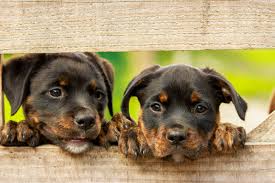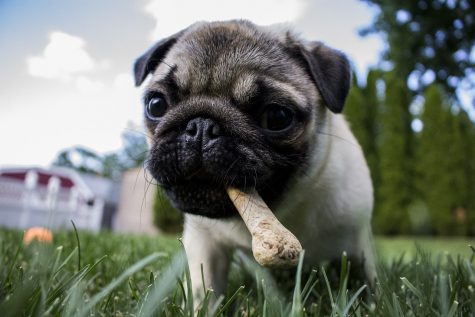Things You Should Never Feed Your Dog

January 14, 2020
We all love our cuddly, small, adorable pets. It’s why we keep them around. We also often find ourselves wanting to spoil them, but that can lead to us feeding them things that might not be the best for their health. Here are some foods that under no circumstances should you be feeding your dog.
Chocolate
This one is a big no-no and something many dog-owners may already know. Chocolate can be lethal for your furry little friend and even in small amounts will still warrant a trip to the vet. The reason behind chocolate’s toxicity to dogs and many household pets is that chocolate contains the compounds caffeine and theobromine. Most pets cannot metabolize these chemicals fast enough and small amounts will often accumulate to toxic levels in their bodies, potentially causing a sick stomach or, at worst, death. If you ever find yourself tempted to feed your dog a pawful of chocolate, you’d best be eating it yourself. Our little animal companions are already sweet enough.
Gum

It’s perfect, isn’t it? If you give your dog some gum, they’ll stop destructively chewing on your furniture and computer cables, right? It’ll freshen up that bad dog breath too. Wrong. If you thought you could trust your dog to chew gum instead of just eating it, you are sorely mistaken. Gum is meant for humans. Period. Even at that, we do a pretty poor job of preventing the occasional Einstein from swallowing a stick of gum. “I thought it was a Starburst,” might cut it for us, but our canine friends have far worse consequences for consuming gum. A compound called xylitol is present in many kinds of gum as an artificial sweetener, and it is fine for humans to consume, but for dogs it can be toxic. The digestive systems of dogs recognize xylitol as sugar and thus produce large amounts of insulin to process it. Xylitol is not sugar, however, so all of that extra insulin will get to work breaking down already-present sugars, causing your dog’s blood sugar level to drop dramatically and putting him or her in potentially fatal hypoglycemic shock.
Cooked Bones
This one might not seem as intuitive at first, but there’s some logic behind it if you think hard enough. Yes, bones have many minerals and nutrients that are good for your dog, but only if the bone is given raw. Cooked bones are brittle and prone to breaking into sharp fragments which can cut, puncture, or choke your dog. This risk is present in raw bones as well, but can generally be minimized by giving your dogs large, raw meat bones and supervising them while they’re gnawing on that tasty treat. Rawhide bones are another alternative that eliminates the risk of your dog consuming bone shards, but smaller bones can still be a choking hazard among a multitude of other reasons.
Rawhide (Be wary)
At its very core, rawhide is a byproduct of the industrial machine. Refuse hide is separated at slaughterhouses and bathed in a noxious chemical bath for bleaching and coloring. These cheap, long-lasting chew sticks may seem like a godsend for owners of rowdy dogs, but the rawhide bone market is also a highly unregulated one. Rawhide chew sticks are not classified as a food, so they aren’t subject to any particularly strict scrutinization process. Adding to the fact that many of them are made overseas in China, American factory guidelines and procedures are unlikely to be followed in the manufacturing process of these chew sticks. When buying rawhide bones, be sure to consider potential risk for your dog and do your research on the manufacturer beforehand.
Grapes
An innocuous fruit at first, grapes are actually quite toxic to dogs as well. This is another one of those ‘small amounts can kill’ types of foods and one that you should be particularly cautious about. Grapes can cause kidney failure and lack of urine production, which can be fatal for your dog. The research behind exactly why grapes are toxic to dogs is nebulous at best, but it is generally agreed upon that the toxic component lies in the flesh of the grape, meaning both non seedless and seedless varieties are out of the question for your dog. It is recommended to induce vomiting as soon as possible unless your dog is unconscious, having trouble breathing, or exhibiting signs of shock.
Remember that this is not a definitive or comprehensive list of all the things that can be bad for a dog. Dogs are creatures that come with their own specific needs and circumstances. Answers to questions you have not had answered regarding dogs or other animals should be directed to a trusted vet. Vigilance, care, and common sense should always be used when considering the health and safety of any living being. Your dog isn’t just an animal. It’s also a part of your family.

















































































































































